"1200 Object". Wheel rival future BMP-1
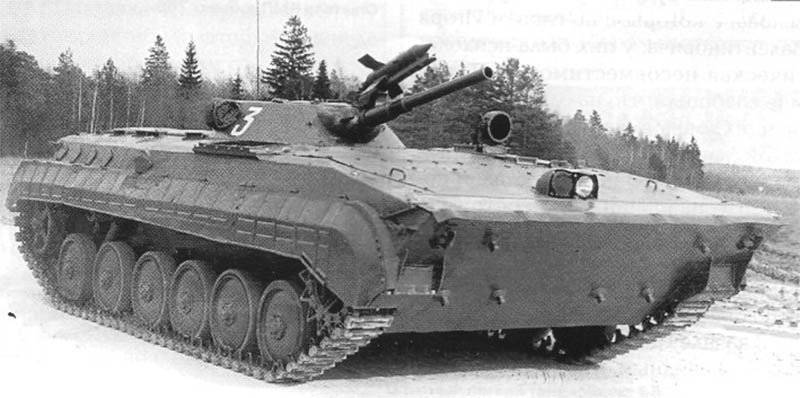
A full-fledged alternative to the crawler "Object 765" can be considered the draft wheel armored vehicle "Object 1200", created in the design bureau of the Bryansk Automobile Plant. According to the results of the first years of operation of the BTR-60 wheeled armored personnel carrier, the Bryansk engineers decided to develop a wheeled armored vehicle. In addition, they already had some experience in creating such a technique. The wheeled chassis with the formula 8х8 found able to provide all the necessary technical and combat qualities. In addition, the wheel propulsion promised the possibility of unification with the existing technology. The development of the 1200 Facility began in 1964, under the direction of F.A. Rozova
Despite the possibility of unifying a large number of parts and units of the undercarriage, when creating a new “1200 Object”, the achievements of the BTR-60 project were almost not taken into account. That is why the welded armored corps of a promising infantry fighting vehicle has characteristic recognizable lines. The car body was proposed to be welded from rolled sheets with maximum thickness (frontal part) in millimeters 60. Thus, the armor provided protection of the crew and units from bullets and shell fragments. In this case, a frontal projection could withstand the fire of large-caliber machine guns. Only bulletproof booking was due to the then views on the appearance of modern war and the requirements for promising technology.
The internal layout of the Bryansk BMP is quite interesting. In the future, something similar was used on some foreign machines. In front of the hull, under the cover of thick frontal armor, they placed the jobs of the driver and commander. Immediately behind them were three landing places. In the middle part of the corps they placed the combat compartment with a turret, behind which were the engine-transmission and main landing compartments. The engine and auxiliary units were located on the left side of the stern of the machine. The remaining volume of the stern was taken under the seats for four fighters with weapons. Embarkation and disembarkation was to be carried out through one stern door and two hatches in the roof. The front volume of the troop compartment was connected to the rear with a narrow passage.
The basis of the power plant of a promising infantry fighting vehicle was to become a UTD-20 diesel engine with a capacity of 300 horsepower. The transmission transmitted torque to all eight drive wheels. The latter were equipped with hydropneumatic suspension and a swap system. An interesting feature of the chassis of the “Object 1200” was the fact that the driver could change the clearance of the car depending on the conditions by adjusting the pressure in the shock absorbers. Especially for movement on water in the rear of the car placed two water cannons, borrowed from a floating tank PT-76. Their intake windows were on the sides, exhaust pipes - in the aft sheet of the hull.
With a total combat mass of the new BMP of the 14 ton order, the 300-strong engine provided it with a specific power of about 21-21,5 horsepower per ton. Thanks to this, the “1200 Object” could accelerate on a highway to a speed of 90 kilometers per hour and cross water obstacles at a speed of about 10 km / h. Fuel enough for 500-kilometer march on the highway.
The combat module was the same for all infantry fighting vehicles participating in that competition. It was a single-seater turret with an 73-2 Thunder X-mm smooth-bore cannon with 28 rounds of ammunition. A PKT machine gun of the 40 caliber of a millimeter (ammo cartridges - 7,62 cartridges) was paired with a gun. In addition, the tower had a launch guide for guided missiles of the anti-tank complex 2000K9 "Malyutka". Inside the fighting compartment, up to four such missiles were placed in the styling. After launch, preparation for the new was carried out manually from the tower.
In 1965, the Bryansk auto-builders assembled the first and, as it turned out later, the last prototype of the 1200 Object infantry fighting vehicle. Since the towers of all the combat vehicles submitted to the competition, including the 1200 Object, were almost the same, their firepower was not compared. This fact has saved time and effort on the installation of weapons. Therefore, the "Object 1200" received a simplified tower, in which instead of guns, machine guns, ammunition and weapon control systems installed their weight imitators. It was in this form that the Bryansk infantry fighting vehicle overcame routes and transported test-soldiers.
The characteristics of the “1200 Object” were generally considered acceptable, however, it was not without complaints. Soldiers who participated in the tests as a "payload" complained about the narrowness of the troop compartment. Firstly, the paratroopers, who were sitting at the commander and driver's places, were not too comfortable to leave the car through the stern door. The BMP sitting in the stern was no easier: due to the specific placement of the engine and water cannons on the sides, the passage and door were not wide enough and comfortable. Other competing vehicles were at least as good as the Bryansk “120 Object”, or even surpassed it.
Yet the main problem of the perspective BMP was wheeled chassis. It was better tracked when driving on prepared roads, but on rough terrain or on water, the balance of power changed. The wheels simply could not provide the car with patency at the level of tracked competitors. In addition, the wheel suspension was too sensitive to the conditions. So, during the test swims in the sea water, some details of the brakes were quickly soaked and become unusable. Another problem associated with movement on water was the adhesion of wet wheels to the surface of the shore. Coming out of the water, the “1200 Object” could only drive ashore with a relatively slight slope.
According to the results of comparative tests of all the armored vehicles submitted to the competition, the most interesting and promising were the tracked “Object 765”, later called BMP-1. Although he lost at the maximum speed (about 60-62 km / h on the highway and up to 7 km / h on the water), the combination of road performance on the ground and on the water was much better. For example, caterpillars with special grids allowed literally to disperse to climb on a fairly steep slope of the coast, and on rough terrain did not allow the car to get stuck.
Comparative tests of several variants of a promising infantry fighting vehicle clearly showed all the advantages of tracked vehicles. The "1200 object" remained in a single copy, which did not even receive weapons. It has been preserved to the present day and is now kept in the tank museum of the Kubinka town near Moscow. The theme of wheeled infantry fighting vehicles did not receive any development, and such a running gear for many years remained a characteristic feature of the domestic armored personnel carriers.
On the materials of the sites:
http://otvaga.narod.ru/
http://vestnik-rm.ru/
http://alternathistory.org.ua/
http://bmp-info.ru/
http://museum-tank.ru/
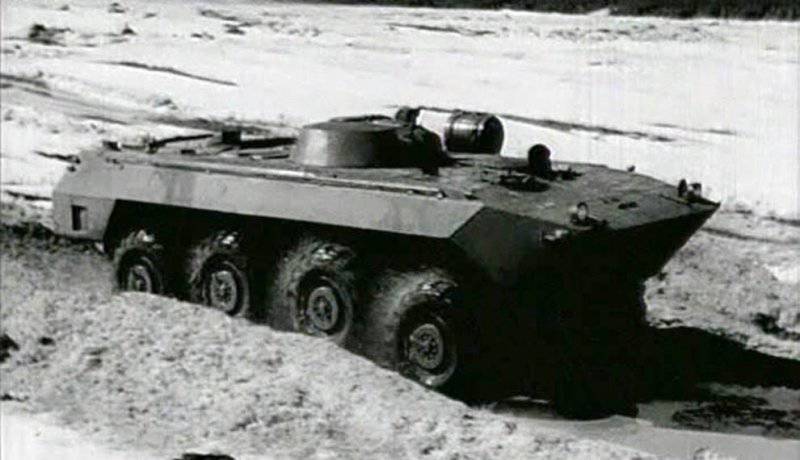
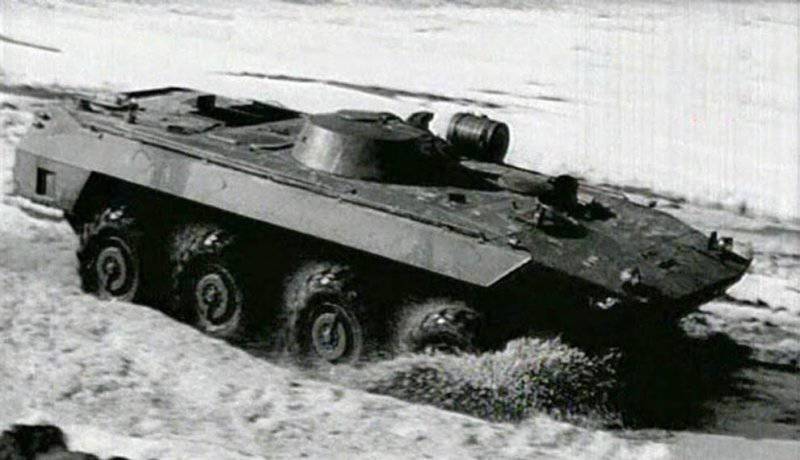
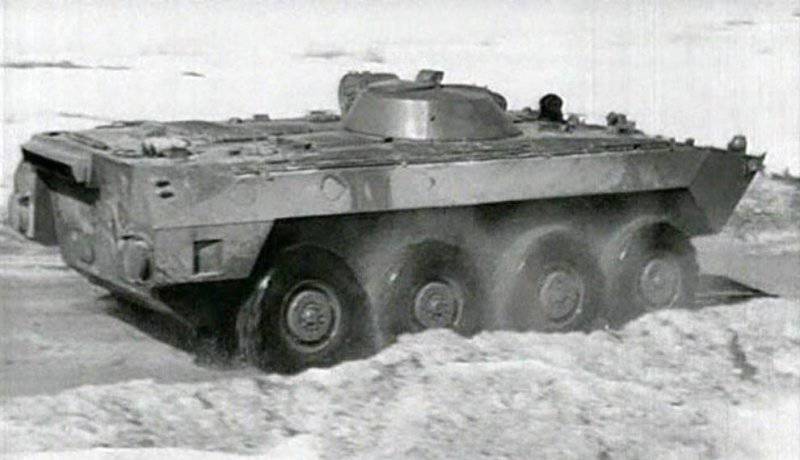
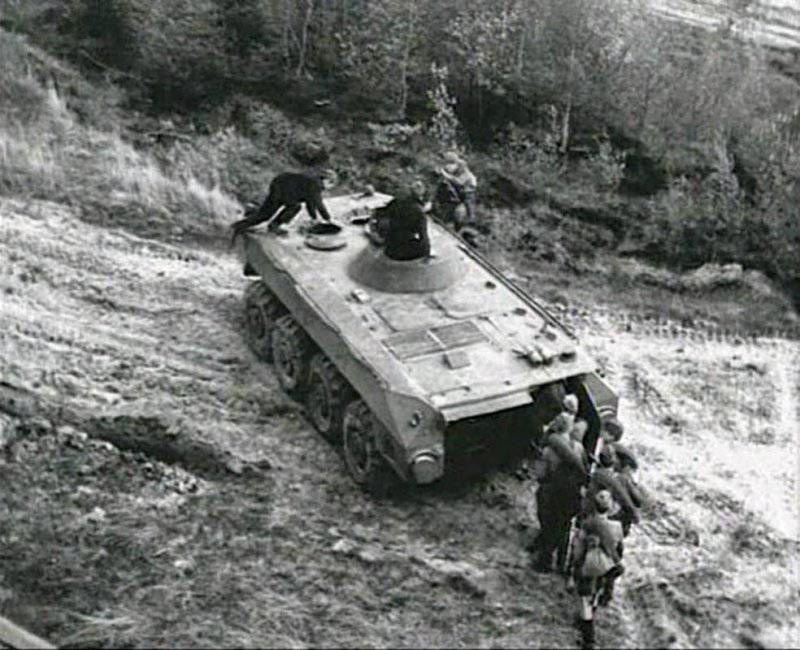
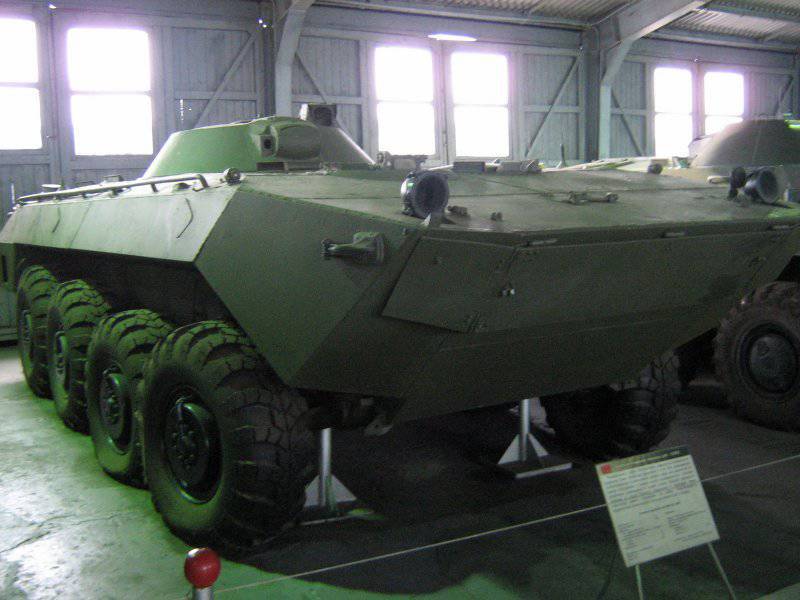
Information